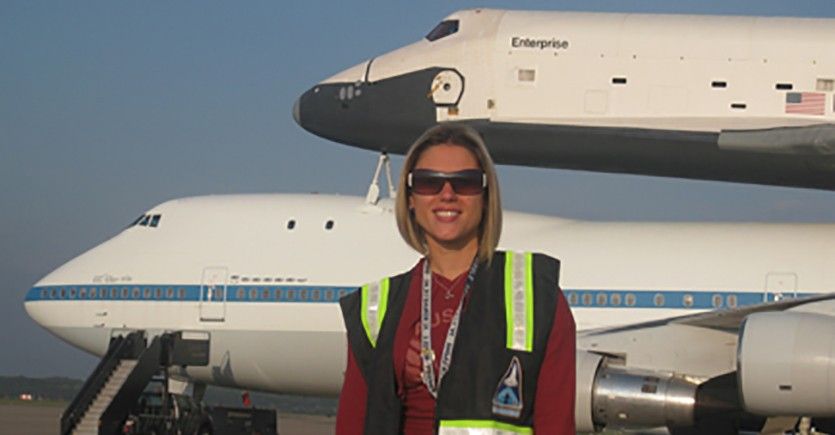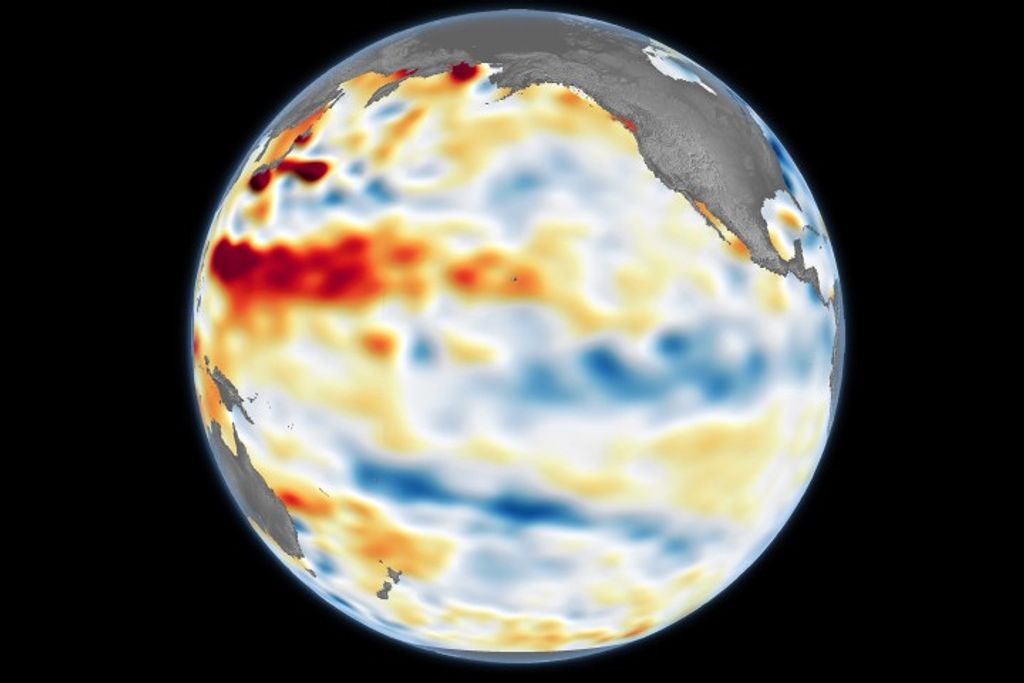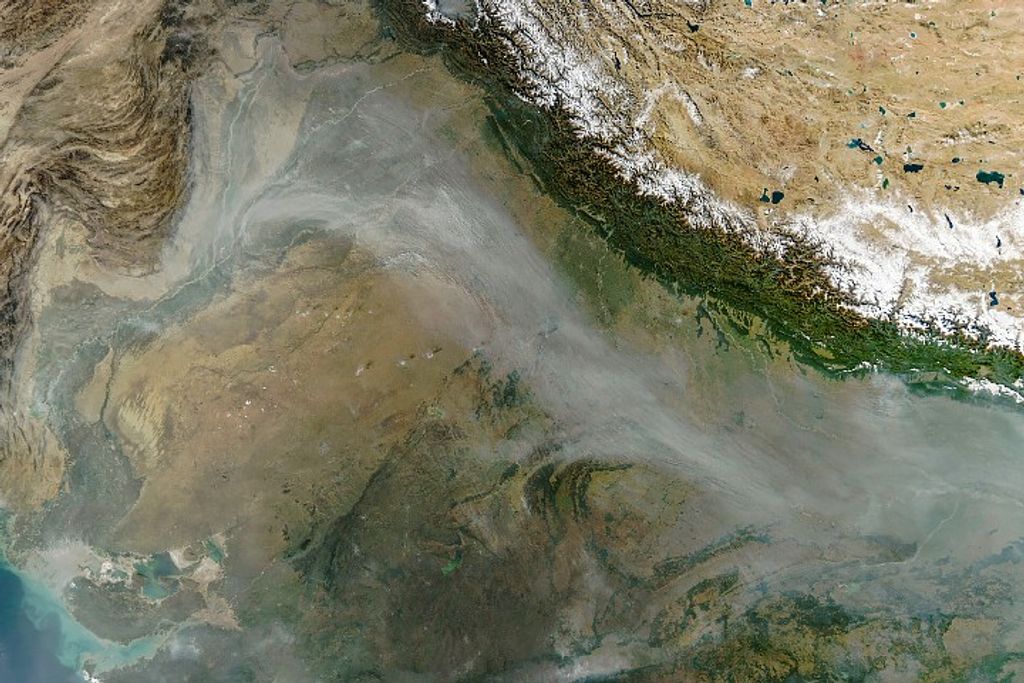
Angela Melito
Deputy Chief Safety and Mission Assurance Officer - NASA's Goddard Spaceflight Center
Contents
- Where are you from?
- Describe the first time you made a personal connection with outer space.
- How did you end up working in the space program?
- Who inspired you?
- What is a Deputy Chief Safety and Mission Assurance Officer?
- Tell us about a favorite moment so far in your career.
- What advice would you give to someone who wants to take the same career path as you?
- What do you do for fun?
- If you were talking to a student interested in science and math or engineering, what advice would you give them?
- Read More
- Where are they from?
Where are you from?
I am from Ocala, Fla.
Describe the first time you made a personal connection with outer space.
I was always interested in science and math, but it was not aimed at NASA or space. I did want to become a scientist when I was younger.
I moved to Florida when I was 13-years old. Before moving there I had not thought about space a whole lot — living in Florida closed that gap for me. There, I saw multiple space shuttle launches from the Kennedy Space Center (KSC). I also had a high school physics teacher that had worked for NASA.
During my second year of college I entered a Mr./Miss Central Florida Community College (CFCC) pageant and one of the categories was to come out in an outfit of the job you wanted in the future. I strolled out in a lab coat with the NASA insignia on it! There are times when I still can’t believe I am actually working for NASA!
Don’t worry if you can’t get excited about science, math or engineering and still want to work for NASA: There are so many other areas and positions that NASA utilizes in order to carry out its mission.- Angela Melito
How did you end up working in the space program?
After I completed my associate degree in physics from CFCC, I decided to pursue a Bachelor of Science degree in engineering physics from Embry Riddle Aeronautical University (ERAU). My senior design project consisted of working with a team comprised of eight of my classmates: we were tasked to design a spacecraft mission. We decided to design a spacecraft that would go and explore one of the moons of Jupiter in search of water. I was in charge of designing the power subsystem and I decided to use a new technology (a nuclear fission reactor). This meant I had to not only produce all of the engineering aspects of my design, but also the safety aspects of the design as well.
After the project was complete we decided to enter it in a nationwide competition. At the end of our presentation we were approached by the vice president of engineering from Swales Aerospace Company in Maryland. He had enjoyed the team’s presentation so much that he invited three of the team members to the company to interview for jobs. This is how I landed my first job. This job was the “launch board” to obtaining my job as a NASA civil servant two and half years later.
Who inspired you?
Both of my parents inspired me as I was growing up in different ways. My mother was a stay-at-home mom when my siblings and I were younger and she was dedicated to allowing my siblings and I explore anything we were interested in. I was interested in many sports, acting and science: she would drive me around to all of my events, without complaint, and always encouraged me to pursue what I loved.
My dad worked very hard to support our family. He was away from home a lot because of his work at various nuclear power plants. I saw, as I was growing up, what hard work meant and how important it was to my dad to show his family we would be taken care of no matter what. When he was home during “transitions” — between working on one power plant and the next — he would attend every activity my siblings and I were involved in.
Both of my parents were also very family oriented and we got to spend a lot of our time with relatives and enjoying the closeness of a family.
What is a Deputy Chief Safety and Mission Assurance Officer?
A chief safety and mission assurance officer (CSO) is in charge of preparing and running the safety and mission assurance aspects of a spacecraft or a science payload. The CSO leads a team consisting of safety, reliability, hardware and software quality, parts, and materials engineers, and plans and coordinates the efforts of the engineering teams in performing quality engineering, while at the same time providing technical direction for complex system development. The CSO also establishes the necessary application of quality assurance disciplines pertaining to the project contractors and in-house development activity. The CSO evaluates all contributions and integrates the recommendations of team members including the identification of critical technical problems and proposed solutions.
Tell us about a favorite moment so far in your career.
I was accepted to a NASA-wide program called the Mid-Level Leader Program (MLLP) in 2012. During this program I was a part of the Shuttle Transition and Retirement Program.
I was there when the Enterprise Shuttle was prepped at the Dulles Airport and transported to New York. I also flew out to New York to see Enterprise arrive at JFK and was there for the offload. And I was at Dulles Airport for the offload of the Discovery shuttle. I was privileged to go inside Discovery and see what the astronauts saw firsthand. I not only toured the inside of Discovery, but I also was allowed to sit in the flight commander’s seat!! While at Dulles airport, I was given a tour of the inside of the Shuttle Carrier Aircraft (SCA) as well.
And lastly, I flew out to LAX for the Endeavour offload. I walked with Endeavour through the streets of Los Angeles from the airport to the California Science Center!
What advice would you give to someone who wants to take the same career path as you?
I would tell them to go for it! I can’t think of a more exciting or rewarding career. Every day I feel very blessed to have been given this opportunity. I would also tell them to take their time in college and figure out what type of engineering interests them the most. Any engineering degree will be transferable in the aerospace industry and you just never know what kind of job you will land! There isn’t a particular degree that encompasses my field of safety and mission assurance. Just about any engineering degree will help you pave your way into this field.
What do you do for fun?
I love to travel in my spare time. Lately, I have been traveling to try to see as many of the national parks as possible. I enjoy their beauty and the hiking. I am also involved in numerous flag-football leagues and tennis meet-ups in the Baltimore and Washington D.C. area. My family and friends are very important to me as well, so I try to see them as much as possible.
If you were talking to a student interested in science and math or engineering, what advice would you give them?
I would tell students today that a degree in science, math or engineering is invaluable. In college you will gain skills that can be used in almost any industry and, most of all, through these programs you will gain problem solving skills that will help you not only at work, but in life in general as well. I would also tell students to get involved in what you love. Don’t worry if you can’t get excited about science, math or engineering and still want to work for NASA: There are so many other areas and positions that NASA utilizes in order to carry out its mission.
Read More
Where are they from?
Planetary science is a global profession.



























